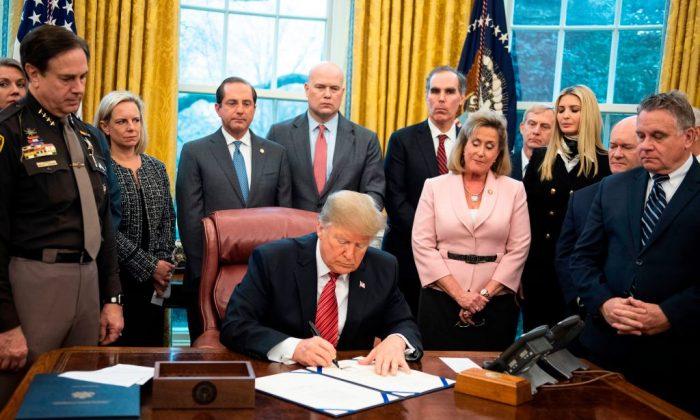Commentary
In the rush to exploit today’s social-media data, people are finding it increasingly difficult to separate fact from fiction.
The lack of hard, verifiable “truths” in social-media data can be scary at times. For example, many in the mainstream media, and others online, are more interested in skewing numbers than pointing out authenticity. For instance, what if you reported that your social-media post achieved 50-percent reach (a measure of its overall impact), but failed to note that you only have two customers to actually reach?
Information shared on the internet can have real-life consequences. Consider the “Pizzagate” conspiracy that trended on social media and on certain news sites, which falsely alleged that former presidential candidate and Secretary of State Hillary Clinton was involved in a human trafficking and child sex scandal. This conspiracy theory led to a man with a gun showing up to a pizza shop in Washington, where the alleged trafficking was supposedly centralized.
Wynne Davis of NPR suggested a process, or “checklist,” for verifying web data, including social-media posts, that could help to avoid situations like this. The process involved checking that content has multiple sources, investigating the reputation of the sources, trying to find verifiable citations for the content, including images, video, or audio, and getting past headlines.
Use of Data
Verifying data on the web is becoming increasingly important, since in today’s world, what you post on social media can be used against you in court. For example, in 2012, a prosecutor in Butler County, Ohio, used photos and Facebook posts to demonstrate to a jury in a murder case against a teenager that the suspect enjoyed violence, according to his likes and posts.There are plenty of other examples of social-media data being used, such as to demonstrate in a slip-and-fall insurance case that the supposedly injured plaintiff was seen dancing in an internet video, ruining the injury argument and helping to rule in favor of the insurance provider. In another example, a New England Patriots cheerleader was dismissed after appearing in a Facebook photo alongside an unconscious man covered in Nazi graffiti. And there are many more.
In a study posted on the website Forensic Focus, almost 700 state and federal court cases over a two-year period involved data from social media to support the case, bringing to light that what you post on the internet is forever—and can be used for or against you in court.
The American Bar Association calls this era “Litigation 2.0,” and suggests that social media is critical pre-litigation intelligence and cross-examination material.
Besides verifiability, people’s reputations are also being evaluated using data on social media and, increasingly, on multimedia.
This was apparent earlier this year, as different sides of the political spectrum tried to evaluate students from Covington Catholic High School and their encounter with veteran and Native American activist Nathan Phillips at the Lincoln Memorial in Washington.
To some, the video clearly showed disrespect from students wearing Make America Great Again hats and a lack of deference to a military veteran there to march in support of indigenous people. To others, with different perspectives of the video not originally shown, the students were peacefully reacting to a potentially dangerous situation, in which an unshown original set of actors were hurling insults at the students (and others) at the Memorial, and the students decided (with chaperone approval) to perform their school chant to drown out the insults before the military veteran approached the students and began drumming in their faces.
How does the everyday person rectify these vastly different accounts? And even scarier, how does someone deal with this knowing that images, videos, and audio can be easily doctored with so-called “deep fake” technology?
Retired Ohio Supreme Court Justice Judith Ann Lanzinger suggested that “courts need to find ways to deal with emerging technology, particularly with the ability to doctor photos and create fake accounts on some social-networking platforms,” according to the Ohio Journal-News.
Considering that multiple phones and other devices may belong to the same person, it’s increasingly difficult to authenticate not just the content, but who is posting it.
Response to the Problems
Deep fake videos—videos in which artificial intelligence takes an existing video and superimposes different speech, faces, or other attributions onto it seamlessly and in a way nearly undetectable by humans—were raised as a big concern during Senate committee testimony of Sheryl Sandberg, the COO of Facebook, and Jack Dorsey, the CEO of Twitter.Also raised were efforts by foreign nations to exploit this difficulty in attributing social media and other web data to influence United States’ and other elections.
Facebook’s answer to these concerns was to hire more human curators, and also to use artificial intelligence to automatically classify potentially unscrupulous posts and accounts. Twitter had a similar response—identifying that there were more than 50,258 automated accounts across the platform.
Concerns exist, though, in the human portions of curation, and also that Facebook and Twitter have too much power to control what is leveraged on their powerful platforms.
In particular, political conservatives in the United States and abroad have suggested they are being “profiled” or “shadow banned”—a process in which the “reach” of an account is minimized by not broadly sharing its posts to followers. Conservatives have also complained that prominent social-media accounts are suspended incorrectly, indicating bias.
Tech Available
The technology used to create deep fakes is broadly available, including the FaceSwap technology on Github that anyone can download, along with NVIDIA’s Vid2Vid technology. Both require a few clicks, some technical reading, and some videos and images, allowing the user to begin rapidly creating these deep fakes, such as the famous deep fake video of President Obama making a speech he never made.The Defense Department, and, in particular, the Defense Advanced Research Projects Agency (DARPA), has several programs working to develop technology to combat deep fakes and also to provide clarity and confidence to data from social media and the web. In particular, the DARPA Media Forensics (MediFor) program is working to provide attribution to videos, images, and audio that would allow users to discern their authenticity.
In addition, DARPA’s Deep Exploration and Filtering of Text and Active Interpretation of Disparate Alternatives programs are working to compare conflicting facts from different media types on the internet and to provide an indication of confidence so people can determine how much belief to have in them.
These capabilities can’t come soon enough, as people wade through the internet and social media trying to separate fact from fiction—and to determine if videos or images are even real.
Chris Mattmann is a principal data scientist and associate chief technology and innovation officer in the Office of the Chief Information Officer at the Jet Propulsion Laboratory in Pasadena, California.
Views expressed in this article are opinions of the author and do not necessarily reflect the views of The Epoch Times.





Friends Read Free